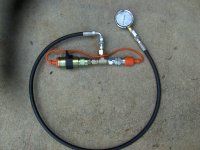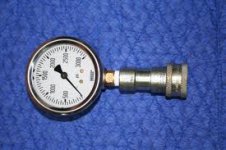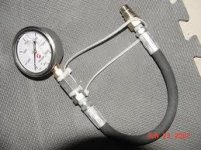Seems as if my loader is a bit weak. Picked up a ton of fertilizer for $1.45 a 35# bag last week and had to unload 20 bags before the forks would get it off the truck. Forks weigh around #300 and they where stuck all the way in the pallet. I would have hoped the loader would pick up a little more than that. With 1,300 it was not light in the rear with the blower on and filled tires. Has anyone messed with the adjustment on the relief valve??? Dealer is nearly 500 miles round trip and growing up on a farm i have worked on tractors my whole life so i am no afraid to tackle it.....
You are using an out of date browser. It may not display this or other websites correctly.
You should upgrade or use an alternative browser.
You should upgrade or use an alternative browser.
Loader relief valve??
- Thread starter mjstef
- Start date
- Views: 5442
More options
Who Replied?
/ Loader relief valve??
#1
Xfaxman
Super Star Member
- Joined
- Feb 8, 2013
- Messages
- 13,282
- Location
- Guthrie, OK
- Tractor
- Toolcat 5610 G - Bobcat V417 - TORO+Loader
The first step is to put a pressure gauge on it to see what it is set at.
George2615
Super Member
As Xfax said, you need to hook up a pressure gauge to see what it is currently set for. I haven't checked mine yet but have only been plowing snow and not much heavy lifting yet. I am going to check mine in the spring to see how close it is to the factory setting of 2242 PSI. The adjustment is under the right side step. So far I think the heaviest thing I've picked up with the forks is either a 1200 lb. safe or my flail mower.
Underdog57
Veteran Member
I checked mine a while ago, don't remember what it was supposed to be but the factory setting was only about 10-15 psi under spec. so I left mine alone.
vwnotrunning
Platinum Member
- Joined
- Jan 17, 2011
- Messages
- 526
- Location
- Central, OK
- Tractor
- jd 1050 LS I3040H. CASE SC farmall Super M
Not sure on your tractor, but some have a separate / additional relief on the loader valve.
Underdog57
Veteran Member
I just plugged a gauge into my rear remotes.
J_J
Super Star Member
- Joined
- Sep 6, 2003
- Messages
- 18,973
- Location
- JACKSONVILLE, FL
- Tractor
- Power-Trac 1445, KUBOTA B-9200HST
Seems as if my loader is a bit weak. Picked up a ton of fertilizer for $1.45 a 35# bag last week and had to unload 20 bags before the forks would get it off the truck. Forks weigh around #300 and they where stuck all the way in the pallet. I would have hoped the loader would pick up a little more than that. With 1,300 it was not light in the rear with the blower on and filled tires. Has anyone messed with the adjustment on the relief valve??? Dealer is nearly 500 miles round trip and growing up on a farm i have worked on tractors my whole life so i am no afraid to tackle it.....
You can use a hyd gauge in several ways.
You can build a hyd tester and plug into the valve work ports you wish to check or install a hyd gauge in the IN port of the first valve and use it to monitor and troubleshoot the hyd system.
Tractor normally comes from the factory with one relief at the 3pt area, or hyd block, and they publish a setting for that relief valve.
After attachments are added such as a loader, the loader valve normally comes with it's own relief valve.
Since the loader valve is now first in line, it is set to the tractor relief setting.
If you do the plug in work port hyd gauge setup, you are only checking the relief valve for that valves work ports.
If you install the hyd gauge in the IN port of the first valve, the hyd gauge will read any pressure developed by any hyd component on the tractor.
Logically, you would set all the relief valves the same.
In an open center hyd system, you would consider the first relief valve in the series flow path the main relief.
Relief valves are usually set with about 10 GPM pump flow.
Some relief valves are set using adjustable relief valves, and others by using the correct shim to correct the pressure.
The lowest relief valve setting upstream will set the limiting pressure. Set the first relief valve first.
Attachments
Last edited:




